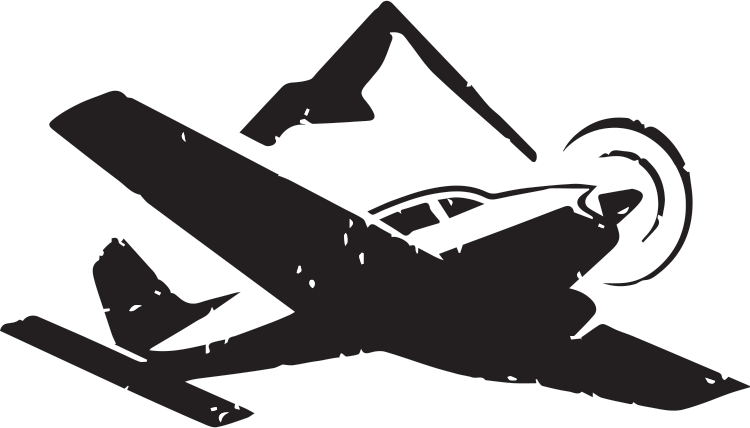A Century Later: Honoring The Chicago's Legacy with a Global Journey
- flightaroundtheglobe.com

- Jan 21, 2024
- 3 min read
Updated: Jan 24, 2024

We invite you to join us on this venture, as we pay homage to the first flight around the world, a century later, with a modern aircraft, new destinations, and this indomitable spirit of exploration.
In the golden age of aviation, The Chicago aircraft etched its name in history with a daring feat that captivated the world—the first aerial circumnavigation of the globe in 1924. This monumental achievement was spearheaded by a team of aviators from the United States Army Air Service, marking a groundbreaking chapter in the annals of human exploration.
The audacious journey spanning 363 hours and 7 minutes and covering over 26,345 miles (42,398 km) with 72 stops in 28 countries unfolded against the backdrop of a world hungry for exploration. Several countries were vying to be the first to achieve this aviation milestone, including Britain, France, Portugal and Argentina. In response, the U.S. Army Air Service, under the World Flight Committee, meticulously planned the circumnavigation attempt, aided by Navy, Coast Guard and Bureau of Fisheries to establish supplying and repairs.
A team of eight men, led by Major Frederick L. Martin and comprising airmen such as Lowell H. Smith, Leslie P. Arnold, Erik H. Nelson, and John Harding Jr., set out on two single-engined open-cockpit Douglas World Cruisers.


On April 6, 1924, at 8:30 a.m., four seaplanes Douglas World Cruisers, took off from Lake Washington, in Seattle, to make the first round-the-world flight: SEATTLE, CHICAGO, BOSTON, NEW ORLEANS. Each plane bore the name of a U.S. city and was christened with waters from its namesake city, reflecting the connection to their homeland. The Chicago, piloted by Smith and Arnold, assumed the lead after the Seattle encountered early challenges.
The expedition encountered a series of trials and triumphs as it traversed the globe. The Seattle, though initially setback by mechanical issues, persevered through Alaska where the plane crashed on a mountainside near Point Moller. Both flight commander Frederick Martin and sergeant Alva Harvey survived and managed to regain civilisation after 10 days of survival in the wilderness.


The mission endured, generally tracing an east-to-west route, circumnavigating the northern-Pacific Rim and venturing through South Asia where the crew encountered challenges like engine change in Indochina and a broken rib suffered by Smith in Burma.
The expedition then pressed on through the Middle East and Europe, reaching Paris on Bastille Day, July 14, 1924. The triumphant return to the United States included stops in London, Iceland, Greenland and Labrador.
Notably, The Douglas Aircraft Company, headed by Donald Douglas, played a pivotal role in this historic venture. The company modified a DT-2 aircraft, creating the Douglas World Cruiser (DWC), a sturdy and versatile aircraft capable of both wheeled and pontoon landings. The aircraft's fuel capacity was enhanced to meet the demands of the arduous journey.

On September 28, 1924, 175 days after departing, the Chicago and its companions completed the circumnavigation in Seattle.
The impact of The Chicago's journey extended beyond the immediate accomplishment. The plane, crew and its counterparts became symbols of human resilience, determination, and the limitless possibilities of flight.

The Explorer's Club and the Legacy of Exploration
At the heart of this centennial tribute is The Explorers Club, a professional society founded in 1904. Their significant contribution to our journey comes in the form of two tangible connection to history.
First, a piece of The Chicago plane, graciously provided by Will Roseman, to underline the Chicago’s accomplishment and permitting it to soar the world, once again.

Adding to this symbolic richness is the Explorer Club flag, numbered 60, a symbol of courage and fidelity. Carried to all of the Earth’s continents, as well as under the sea and into the stars in over 25 expeditions since 1935. We take pride in joining this illustrious group of explorers and scientists, and carrying these relics in a continuous thread of exploration woven through time.

As we stand on the precipice of our own expedition, the anticipation is palpable. The Chicago's legacy lives on, not just in the history books but in the very essence of our journey, as we carry with us these tangible reminders of the pioneers who charted the course in History.
Stay tuned on this blog for more details about the upcoming journey, and explore our other articles for an in-depth look at the expedition. The adventure awaits.
Sources :
- National air and Space Museum Website https://pioneersofflight.si.edu/content/first-flight-around-world#:~:text=On%20April%206%2C%201924%2C%20eight,and%20covering%20about%2027%2C550%20miles.
- “First Flight Around the World: The Adventures of the American Fliers Who Won the Race” by Tim Grove – National Air and Space Museum
- Smithsonian Archives (various photos)
- US National Archives (various photos)
- US National Archives, “The First Round-the-World-Flight”, August 4th 2010, https://www.youtube.com/watch?v=q_2AVyt9B_A
- US National Archives, “Around the World by Airplane”, July 12 2010, https://www.youtube.com/watch?v=poDpyzzRozo




Comments